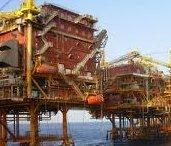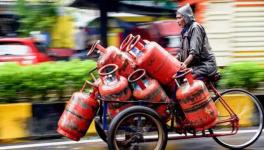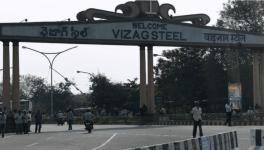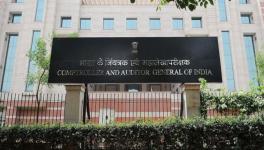Doubling of Gas Price: From Self-reliance to Reliance Is the Govt's New Motto
The Cabinet Committee on Economic Affairs (CCEA) has decided that from March 2014, the price of gas will double – it will rise from $4.2 per MMBTU to $8.40! This increase is even beyond the petroleum ministry's suggested price of $6.67, which was opposed by the power and the fertiliser ministries.
No explanation is on offer on why such a steep hike has been decided except that this is in line with the Rangarajan Committee Report. Why the price of gas for which Reliance has made all the capital investments quite some time back should be linked to the international price of traded liquefied natural gas (LNG) has not been made clear by either the Rangarajan Committee or the CCEA. Neither is it clear why the price of gas in the ground in India should be linked to the dollar, particularly at a time where the Indian rupee is in free fall.

The main impact of this rise is:
Increase outflow in terms of subsidies for the power and fertilisers by Rs 400,000 crore
Increase profits to Reliance of Rs 75,000-100,000 crore
Immediate doubling of LPG cost of cylinders for subsidised and non-subsidised cylinders
Risk to 28,000 MW of installed capacity of gas based plants becoming unviable
Surya Sethi, the former principal adviser (power & energy), Government of India has pointed out in his article in The Hindu, dated July 1, 2013 that nowhere in the world is the price of well-head gas linked to the price of liquefied natural gas. He has also pointed out that the spot price in the Henry Hub Terminal today is $3.77 per MMBTU and this is also higher than the well-head price of gas in the US. In Gulf countries, the price of gas is only $ 1 per MMBTU, in Egypt $ 2.57, in Nigeria $ 0.11, in Australia $ 5 and in Indonesia around $ 1. Giving Reliance a price of $8.40 per MMBTU defies any logic.
We might remember that Reliance had committed to NTPC a price of $2.34 per MMBTU for 17 years initially, before reneging on this contract as the price of gas was raised from $1.79 to $4.20. During the Ambani brothers fight in courts, it had come out that the cost of gas was only $1.43 dollar per MMBTU. An Empowered Group of Ministers headed by Pranab Mukherjee increased the gas price to $4.20, handing Reliance a huge bonanza.
This however, was not enough for Reliance. Under the production sharing contract with Government of India, the government would have also got some additional profit petroleum due to this increase in gas price after clearing off all the capital costs of the project. To avoid this, Reliance gold-plated its investments, claimed that it would raise the production to 80 million MMSCD from 40 million MMSCD and syphoned off the government's share of profit as well.
Even this was not enough for Reliance. So the demand that the gas price at the well-head should be equal to that of traded LNG in the international market. Of course, this was given full-throated support by BP, who have bought 24 percent stake in Reliance Industries and want a quick return on their investment. So after already making a killing by gold plating their investments in KG Basin gas field, a further largesse by increasing the gas price by another $4.20 has now been given by the Manmohan Singh government.
It might be noted that BP had decided to invest $7 billion for 24 percent share in the KG D-6 field, at a time that the gas price was $4.20. Clearly, this price of gas was high enough for it to invest this huge amount.
Effects of Raising Gas Price
How much will the people lose due to this increase in gas price? The fertiliser and the power ministries had computed what will be the effect of raising gas price. Based on their calculations, the annual increased outflow in terms of subsidies to the fertiliser sector will be Rs 16,992-crore and increase cost of fuel for the power sector will be Rs 43,360 crore for just one year. If we take just 4 years – from 2013-2017 – the total impact is of the order of Rs 240,000 crore calculated only on a price of $8.80. Since the price will rise to $14 in this period, the total impact on the people will be of the order of a whopping Rs 400,000 crore!
We had noted earlier that the distribution companies in the power sector are currently in the red by Rs 2 lakh crores, a position which will worsen even more with this hike in gas prices. 28,000 MW of gas plants are either commissioned or in the pipeline. All of them will become sick with the gas price of $8.40. Already, the finance ministry is talking of subsidies to meet the huge gap between the gas and coal prices for the power sector. At one stroke, the government has increased its potential subsidy by more than Rs 40,000 crore per annum, if not more.
What happens to the consumer who uses LPG for cooking? Already, the price of non-subsidised LPG has doubled to Rs 800 per cylinder. Either the government will have to increase its subsidy or the subsidised LPG will cost Rs 800 and the non-subsidised cylinders will cost Rs 1600 in 2013, rising to nearly double that over the next five years. This is truly robbing the poor to pay the rich.
Robbing People
The government has argued that an increase in gas prices is required to bring in investments into the gas sector. We have been offering oil price import parity to all companies which are willing to invest in the oil sector. The only company that came in – Cairn Energy – has now pulled out after selling its stake to Vedanta. What makes the government believe that gas is different from oil?
Offering oil price parity has not helped brining in investments. Increasing gas prices as we did earlier, saw Reliance decreasing gas production for further price gouging. The simple fact is that if India wants to increase its oil and gas production, it must learn from the mistakes it has made and go back to strengthening the public sector companies that built the Indian oil and gas sectors. Turning India's energy future to private and foreign capital has led to mega scams and relatively little gas and oil finds. Even where such finds have taken place, the people have received little benefits, with the prices 6-8 times that of what it takes these companies to bring oil or gas out of the ground.
The other argument given for inviting private and foreign capital is that the government also receives a share of the gas or oil found through the profit sharing arrangement that is a part of the contract with them. Can the government tell us how much share the government has actually received through such profit sharing? When the public sector oil companies drill and find oil, they are milked in a number of ways. They carry the major part of the subsidy and their surpluses are siphoned off. When companies such as Reliance and Cairn Energy receive such benefits, all that happens is that their profits increase as do their share prices.
Every time the government increases either the price of gas or approves the increased capital cost of Reliance, it has claimed that this will lead to additional supply of gas. This has not happened. What is the government going to do about this? Will it penalise Reliance for making promises which it has not kept and for which it has already taken out its inflated investment costs from what otherwise would have been the government's share?
The CAG had pointed out that not only had Reliance cooked its books to inflate the capital costs in KG D-6 gas field, but it had also not released the area which it should have done under the contract. Has this been now enforced? What has happened to the proceedings against Reliance by the petroleum ministry, which had started under the previous minister?
Increasingly, the Indian government is becoming totally captive to the interests of global and Indian big capital. This is most starkly shown in the case of India's natural resources, whether it is gas or oil fields, or other resources such as coal. What we are seeing is predatory capitalism which uses the State to rob the people. The doubling of the gas price at one stroke, when nothing has changed to warrant such an increase, is another example of this mafia capitalism. This is a mega scam whose only purpose is to benefit one monopoly house. India has indeed come a long way from Nehruvian self-reliance to now working only for Reliance.
Disclaimer: The views expressed here are the author's personal views, and do not necessarily represent the views of Newsclick
Get the latest reports & analysis with people's perspective on Protests, movements & deep analytical videos, discussions of the current affairs in your Telegram app. Subscribe to NewsClick's Telegram channel & get Real-Time updates on stories, as they get published on our website.
























